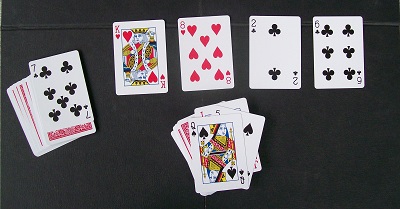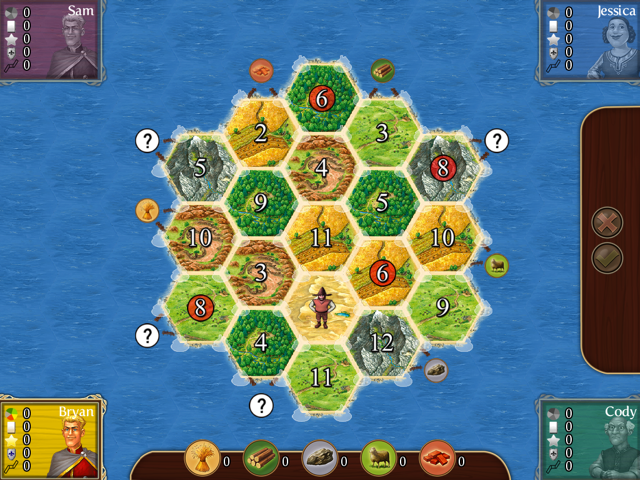The word rhetoric is often viewed as changing another individual’s opinion by using words to persuade. Although this is still a very common practice and one we see in our everyday lives, there are more than just words to use to persuade an individual’s opinion. In the modern world we have access to technology which allows us to use rhetoric in many ways. Ian Bogost, a well known rhetor stated the following concerning visual rhetoric, “Visual rhetoric offers a useful lesson in the creation of new forms of rhetoric in the general sense. One would be hard pressed to deny that advertisements, photographs, illustrations, and other optical phenomena have some effect on their viewers.” To help explain this statement, we have analyzed a variety of popular games to help show the evolution of rhetoric in an evolving world.
Below is a description of 3 different games (Retro City Rampage, Settlers of Catan and Nertz) we analyzed to clarify Bogost’s statement on procedural rhetoric.
Ian Bogost stated in his book on procedural rhetoric that visual rhetoric is often linked to video games.
Retro City Rampage:
cops will chase you. You also get crazier and crazier as the game goes on. With the addition of movie and tv show references. In the story doc brown, known as doc choc in the game, believes “the player” is a time traveling hero because he stole the phone booth time machine. “The player” must then help Doc Choc with repairing the time machine while multiple references are made. You are helped by people from bayside high school, saved by the bell, all the way to Dr. Von Buttnik, main sonic villain.
Bogost also pointed out that, “visual rhetoric is the practice of using images persuasively”,
Settlers:
When a new island is discovered by a group of settlers the main goal is to gain the most resources and use them to your advantage to conquer the island against your components. It shows that resources are limited and they must be used wisely in order to get ahead in this game. In the digital version it is hard, even impossible to cheat compared to the physical board game. There is some chance in it, so a little luck and strategy go a long way.
Even though you want to be the winner, you need other people to help you through trading, negotiation, etc. It is smart to work together.
On the board game itself, you will see in the images below that they have colored common numbers on random islands to persuade participants to build their homes/cities on that island.
Nerts:
Nerts is a high speed card game that can be played with any number of people. All that’s needed is a deck of cards for each player and skill to think and act quickly. The procedures of this game starts out with a pile of thirteen all face down except for the top card, four individual cards separated from that, and the rest of the deck in a third pile used to keep the game moving.

The game seems intimidating at first because after the setup, there are additional rules to follow in order to win the game. The main goal is to run out of cards in the starting deck (deck of thirteen). To start the game an Ace must be put down in the middle and then additional cards are placed in ascending order in the same suits. In other words, the ace of spades must be followed by the 2 of spades, then the three and so on until the King of Spades is put down. That pile can then be discarded to make room for more cards.
The four cards in the second group is where strategy can come in. Solitar can be played on the four cards in order to free up some of the thirteen in the other deck. This can backfire though because only the top card of any pile can be played. When a card is played from this middle pile which frees up a spot, one of the thirteen from the first pile can replace it which is a good thing.
The third pile, which is the rest of the deck, can be used to keep the game going if the first two piles don’t offer anything useful. Three cards are flipped over and the top card can be played if it is useful. If not, three more cards are then pulled out to see if that top card can help. This is repeated until the third pile is exhausted, the top card of that pile then becomes the bottom and the action is repeated all over again.
Everyone is playing at once and everyone is trying to get rid of their pile of thirteen the fastest. Once someone yells NERTS, game over. Every card left in the pile of thirteen is negative 1 point, and every card in the middle from your deck is 1 positive point. Whoever got Nerts gets 10 extra points. Speed is rewarded with success and even though beginner's luck is very hard to come by, some luck is needed to get a good hand and skill can carry you the rest of the way. Check out Cody's blog @ http://rhetoriciansnow.blogspot.com/
And Sam's @ https://sickrhetoric.wordpress.com/
Also there are three other blogs that talk about the game of Life @ http://emibluerhetoric.blogspot.com/, draymondwritinginrhetoric.blogspot.com, pwrbb.blogspot.com
Sources
https://en.wikipedia.org/wiki/Retro_City_Rampage (Rampage Image with DocBrown)
http://www.nintendolife.com/games/wiiware/retro_city_rampage (Fresh Prints)
http://allaboutfunandgames.com/card-game-of-nertz-how-to-play-the-favorite-multi-player-game (Nertz)


